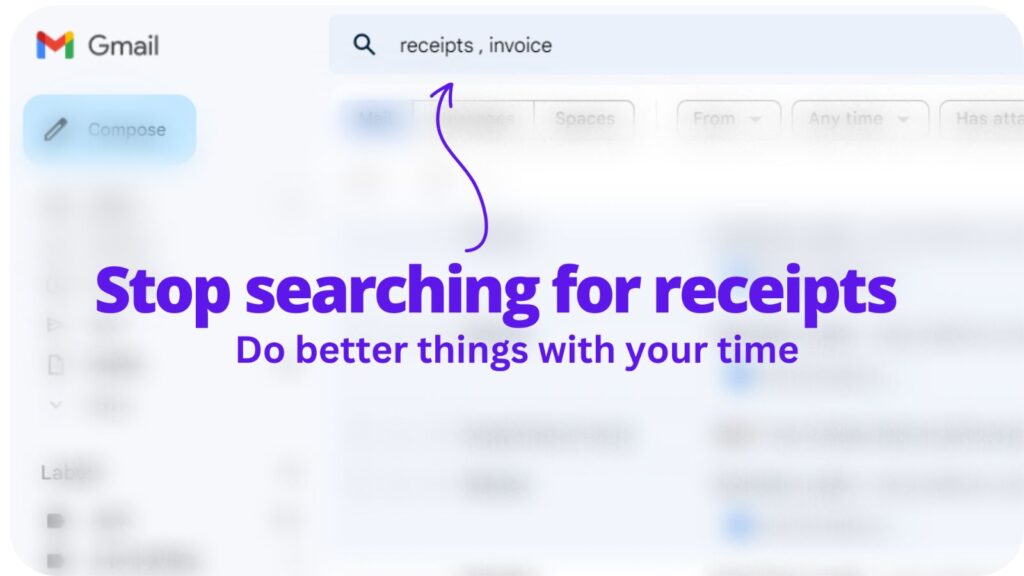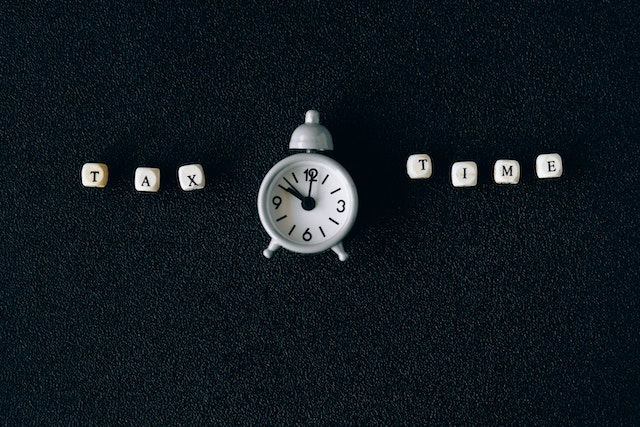Keeping track of your receipts is crucial for businesses of all sizes. It’s a key part of managing your expenses and staying tax compliant. This article will provide valuable insights on the best practices for receipt management and highlight the most effective tools to make this task easier and more efficient.
We aim to help you get tax-ready with confidence.
The Importance of Receipts for Reconciliation
Understanding Reconciliation
Firstly, you compare your bank statement with your accounting records. The bank statement is a list of all the money that went in and out of your bank account. It comes from your bank. Your accounting records, on the other hand, are your own records of income and expenses. This is where it’s crucial to know how to handle bookkeeping for small businesses.
Afterward, you look for differences between these two. These differences can be due to bank fees or errors in data entry. In the process of reconciliation, you adjust your accounting records to match your bank statement. Therefore, reconciliation helps you keep accurate financial reports for your business.
Why Receipts Matter in Reconciliation
Receipts are like pieces of a puzzle. They provide important details of business purchases and payments. Above all, they are proofs of your business transactions.
Consider this scenario. You run a small business. You buy some supplies for your company using your business credit card. After that, you receive a receipt. This receipt is proof of your business expense.
During reconciliation, you use this receipt to verify your accounting records and bank statements. In other words, receipts help you confirm that your records are correct. And, remember, the IRS requires these documents. So, you’ll need them when you file taxes.
Another reason why receipts matter is tax deductions. For example, you can often reduce your business taxes by claiming certain business expenses. But, to do this, you’ll need your receipts. So, keeping organized receipts can also help you save money during the tax season.
Best Practices for Keeping Receipts for Reconciliation
Organizing Your Receipts
You should decide where to keep your receipts. You can use a file folder, a box, or even an app on your phone. Next, sort your receipts. You can do this by date, by expense type, or by business account. This helps you find them easily later.
Most importantly, don’t throw away your receipts. Keep them for at least three years. This is because the IRS can ask for them. It’s also good to double-check them with your bank records. This way, you can spot errors quickly.
Consistent Documentation of Receipts
Consistent documentation means recording your receipts in the same way every time. It’s like playing a game. You need to follow the rules. So, set some rules for how you record your receipts. For example, every time you get a receipt, write down the date, the amount, and what you bought.
This is where advancements in technology, such as accounting automation & future jobs, could be pivotal. Automation helps not only in keeping the documentation consistent but also speeds up the process.
You can also use accounting software. Software like QuickBooks Online can help you keep track of your receipts. Take a picture of your receipt and the software then stores the information.
Another important thing is to reconcile your receipts regularly. It’s like cleaning your room. If you do a little bit every day, it won’t pile up. So, set aside a few hours every week or month for reconciliation. Your future self during the tax season will thank you for this.
Remember, keeping organized and consistent records is key to running a successful business. It makes tasks like bank reconciliation easier and helps you prepare for the tax year.
Transitioning to Digital Receipts for Reconciliation
Benefits of Digital Receipts
Going digital with your receipts offers many benefits. Firstly, you can easily organize digital receipts. Think about it like a digital filing cabinet. Every receipt has its place, and you can find it in seconds.
Plus, digital receipts save space. No need for boxes of paper. This is great news for small business owners with little office space. Also, digital receipts can’t get damaged or faded like paper ones. So, you don’t need to worry about spilled coffee anymore.
Moreover, digital receipts can work with your accounting software. They can automatically match receipts to transactions in your bank account. Just think, you could be done with your bookkeeping in a few hours.
Considerations When Transitioning to Digital Receipts
For example, you need to make sure your digital receipts are safe. Think of them like your money. You wouldn’t leave your cash lying around, would you? So, use secure software to store your receipts.
Also, check that your digital receipts are legal for the IRS. Some rules say what kind of digital receipts are okay. You need to follow these rules to make sure your tax return is correct.
Last but not least, plan your transition to digital receipts. It’s like moving house. You wouldn’t just throw everything in a box and hope for the best, right? So, plan how you will move your receipts from paper to digital. This will help you stay organized and keep your business records in order.
Choosing the Right Tools for Managing Receipts for Reconciliation
Features to Look for in Receipt Management Tools
There are many receipt management tools out there. But not all are the same.
A good tool should let you organize receipts easily. It should help you match them to transactions in your bank account. This helps with bank reconciliation, making it a quicker process. So, look for tools that work well with your accounting software.
Also, the right tool should have strong security. Remember, your digital receipts are like money. They need to be safe. Make sure the tool follows applicable laws and keeps your data secure.
Lastly, think about accessibility. Can you access your receipts from anywhere? Can you use it on your phone or tablet? This is handy for business owners always on the go.
Top Receipt Management Tools in the Market
There are many receipt management tools in the market. Here are a few top ones that many business owners use.
QuickBooks Online is popular. It is a full accounting software that can manage your receipts too. It’s great if you want everything in one place. Plus, it works with most banks, making bank feeds easy to manage.
Another option is Expensify. It’s good at handling expense reports. You can snap a photo of your receipt, and it will turn it into a digital record. Handy for business owners with lots of bills and expenses.
Last but not least is WellyBox. It focuses on making your bookkeeping process easier. It also helps you track income and expenses. So, it’s good for tax season when you need to prepare your tax return.
How to Prepare Your Receipts for Reconciliation for Tax Time
Important Tax Dates and Deadlines
Knowing tax dates and deadlines is key. It helps you plan. For example, you need to send your tax return by a certain date. Usually, this is in April for the prior year’s taxes. But, it could be different if you’re a business.
Tax professionals can help with this. They know the deadlines. If you’re a small business owner, consider asking one for help. If not, you can find these dates on the IRS website. Make sure to mark them on your calendar.
Also, remember to prepare your bank records well in advance. Start by reconciling accounts. This is where your bank statements match your own records.
You should also double check your invoices and payments. The same goes for any outstanding or canceled checks. Doing this in advance makes the process easier.
Common Mistakes to Avoid When Preparing Receipts for Tax Time
People often make mistakes when preparing for tax time. Some people lose track of receipts. This is bad for bank reconciliation. So, always organize receipts as soon as you get them. You can use a file folder or accounting software.
Another common mistake is not recording petty cash. Small businesses often use petty cash for minor expenses. But, even these small amounts count. Make sure to get a receipt for every purchase. Then, record it in your business records. This way, you can account for all expenses.
Not double-checking your bank feeds is also a mistake. This is important for tax prep. Check your bank feeds against your own records. Make sure there are no errors. This includes your credit card statements and other bank accounts. Mistakes must be corrected right away.
Not understanding applicable laws can lead to issues as well. Tax laws can be confusing. But, they’re crucial for tax prep. So, consult a tax professional or use reliable resources. They can help you understand the laws. This way, you can be sure your tax return is correct.
Lastly, don’t forget to reconcile your fixed assets. These are items like buildings or equipment. You need to account for their value on your balance sheet. Use your receipts to track their purchase and maintenance. This helps you keep your business records accurate.
Frequently Asked Questions
Can I manage receipts for reconciliation manually?
You could manage them manually, however, it’s time-consuming and prone to errors. That’s why many small businesses use receipt management tools. They help automate the process and make bank reconciliation easier.
What happens if I lose a receipt?
If you lose a receipt, it might be harder to track your expenses. This could make reconciling accounts difficult. Also, if you’re audited, you might not be able to prove some expenses without the receipt. So, always keep a copy.
Do I need to keep paper receipts if I have digital copies?
For most businesses, keeping digital copies is enough. But, the digital copies must be clear and readable. If the IRS audits you, they’ll accept these copies. Just make sure to keep them safe and organized.
Can I do bank reconciliation without a tax professional?
A tax professional can help you spot errors and make sure everything is correct. If you’re new to bank reconciliation or if you have complex accounts, you might find their help useful.
Conclusion
Receipt management and bank reconciliation are key for any business. They help you keep track of expenses and prepare for tax season. Whether you’re a small business owner or a tax preparer, having the right tools and practices can make a big difference. One of these practices includes understanding your receipt requirements for reimbursement. By grasping how receipts contribute to your reimbursement processes, you can ensure accuracy and compliance in your financial management.
So, consider using digital receipts and receipt management tools. They could save you time and help you stay organized. In the end, the more organized you are, the easier managing your business will be.

Collect receipts from your email automatically!
Try WellyBox - your AI assistant for receipts😃
Start for Free


